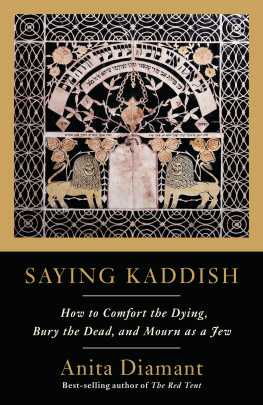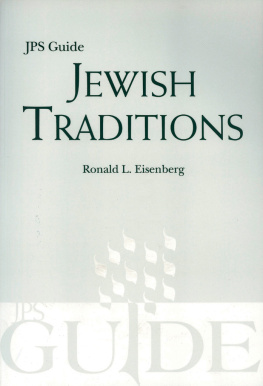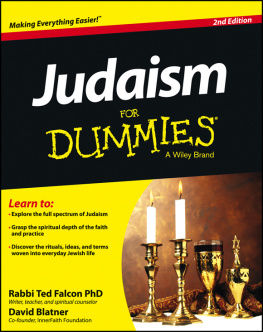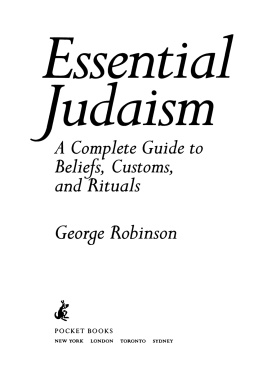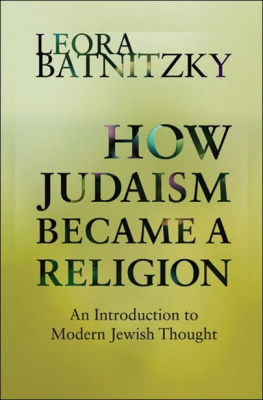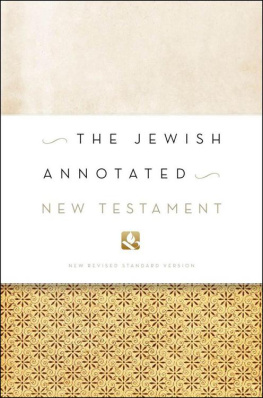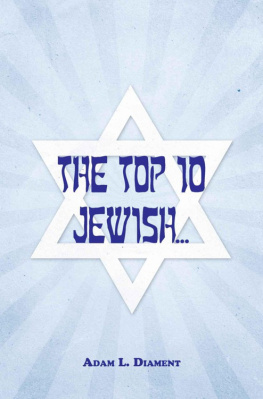LIVING A JEWISH LIFE
Updated and Revised Edition
Jewish Traditions, Customs, and Values for Todays Families
ANITA DIAMANT with Howard Cooper

For my daughter, Emilia Diamant
She is a gift and a wonder.
A.D.
For my mother, Annette S. Cooper
My mother was a perfect tzadik.
H.C.
For the modern Jew, observance is no longer a matter of the all or the nothing. One only has to start.
Nobody can tell where this beginning will lead.
F RANZ R OSZENWEIG (18861929)
Dear Reader:
While I was writing this book, I thought a lot about who you might be, why you might pick up this title, and what you needed from an introduction to Judaism. I did this because I wanted to write a book that you would be comfortable with, a book that you could really use.
Since my image of you guided the contents, the organization, and the tone of Living a Jewish Life, I think its only fair to tell you who I think you are.
I think you are a graduate student, and that you are an empty-nester. I think you have two children under the age of five, that you hope to become a grandparent soon, and that children are not part of your life-plan at all. I think you went to Hebrew school as a kid, and that you grew up only vaguely aware that you were Jewish but never belonged to a synagogue or any other Jewish organization. I think that you cherish memories of your mother lighting candles every Friday night, and that youve never seen anyone do that in your whole life. I think you are interested in Judaism because the person you are in love with is a Jew, and that you have been a Jew-by-choice for many years. I think you are not Jewish at all but are raising a Jewish child with a Jewish spouse. I think you are the Christian grandparent of Jewish grandchildren.
I think you know not a single word of Hebrew and that you can still read a little Hebrew from when you prepared for your bar or bat mitzvah . I think you believe deeply in the existence of a Holy One, and that the question of religious faith is meaningless to you.
I think you are married, divorced, single; straight and gay; active in the Jewish community and alienated from it.
In other words, I think you are a very diverse bunch. What you have in common is a genuine interest in Judaism as a way of life. I think you are curious about how to make Jewish choices in ways that do not deny the importance of all the other parts of yourself and your world. I think you are eager to learn from tradition and confident of your own ability to interpret ancient sources and ways.
I think we have a lot in common.
I was born to Jewish parents, both Holocaust survivors, who gave me an undiluted and positive Jewish identity. Yet, I consider myself a Jew-by-choice and I only started studying my heritage and making Jewish choices in my late 20s. That was when I fell in love with a non-Jew and realized how little I knew. So my then-boyfriend and I joined a Jewish reading group and discovered the vastness of the Jewish library. I wrote newspaper articles about the Jewish community and learned how varied and vital it is. I started to light candles on Friday night and made a place for meaningful ritual in my life.
When my fianc decided to convert to Judaism, we found wonderful teachers and studied together. And together we started making Jewish choices, a process we continue day by day, year by year.
The Jews have often been called the Chosen People. They have also been called the Choosing People. Living a Jewish Life is intended as a guide to help you make meaningful choices in this ancient, life-affirming tradition. Remember that every Jew, regardless of training or accomplishments, is a student. Judaism is as wide and as deep as the ocean itself, which means that we are all, even the most learned among us, beginners.
I hope you find this book a welcoming and intriguing place to begin your exploration of Jewish life. May your journey be pleasant, your paths peaceful, and your discoveries fulfilling.
Anita Diamant
January 5, 2007
15 Tevet 5767
Opening this book and reading these words might constitute one of your first Jewish choices as an adult. Your reasons for wanting to explore Judaism are uniquely your own. Perhaps they have something to do with the desire for a more examined life, or a need to acknowledge spiritual or religious feelings. Maybe you are looking for an honest way to provide your children with a sense of their place in a great religious, ethical, cultural, and ethnic tradition.
Whatever your motivation or background, the first goal of Living a Jewish Life is to open the door to that tradition; the second is to help you make your own Jewish choices, at home, in the community, for years to come. The first section, Home, describes the core elements that define a self-consciously Jewish home, which is the heart of Jewish life. These chapters cover everything from the contents of the kitchen cabinets, to the books on the shelves, to the observance of Shabbat the Sabbaththe most important and sweetest of all Jewish holidays.
The section titled Community introduces the larger context for Jewish choosing, with information about how to find your niche through synagogues, educational institutions, and other kinds of organizations. This section also contains a discussion of Jewish learning, from preschool through adult education, and a chapter about Israel and traveling the world.
Observance provides an overview of the Jewish calendar, the annual holiday cycle, and the events that celebrate the human life cycle.
In order to make Living a Jewish Life as accessible as possible, Hebrew and Yiddish words and references have been kept to a minimum. Every non-English term used in this book is defined at least once in the text, and there is both a glossary and index for easy reference. A listing of recommended readings and resources is included, as is a timeline for historical reference.
While it is not a book of dos and donts, Living a Jewish Life does have a point of view, and even an agendawhich is to encourage readers to make Jewish choices, to try on some of the rituals, observances, and customs described in the following chaptersto see how they feel and to explore what they can mean. Although there is a great deal of practical information in these pagessuggestions, instructions, and menus for everything from prayers to arts-and-crafts projectsthe how-to materials are not presented as ends in themselves, because one of the hallmarks of liberal Judaism is its insistence on finding and creating meaning, on considering the why of everything: Why light candles on Friday night? Why forgo shrimp? Why get married under a canopy? Why join a synagogue?
For liberal Jews, the answers to these questions are not fixed, but open, dynamic, and personal. The answers come from many sources: through the process of studying traditional Jewish texts, such as the Torah, the literature of Jewish law ( halachah ) and imagination ( Midrash ); through the sweep of Jewish history; through discussion with teachers and peers; through a sense of Gods presence; and through personal reflection and experimentation.
Living a Jewish Life takes a descriptive rather than a prescriptive approach to Judaism. The word should does not appear in these pages. Since Jews do thingswell, actually nearly everythingin many different ways, this book contains menus of choices about the hows, whens, and whys of modern Jewish life. This embrace of Jewish pluralism is an expression of liberal Judaism, which requires an introduction of its own.


